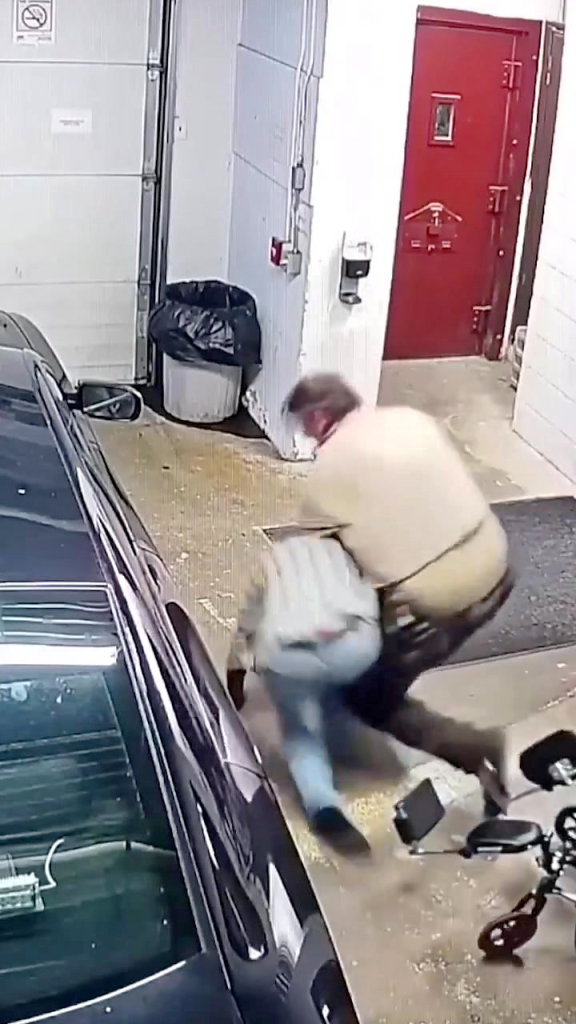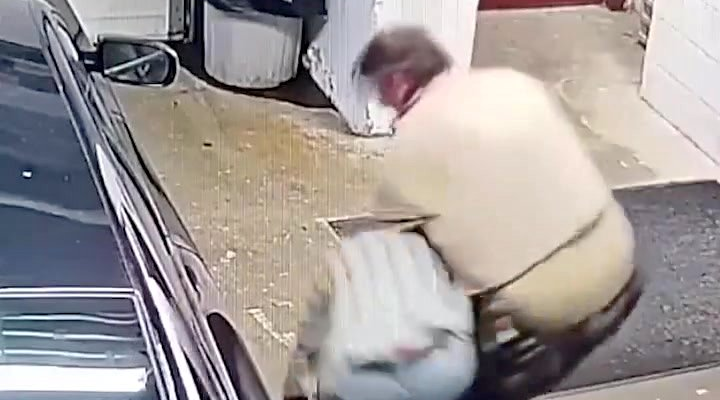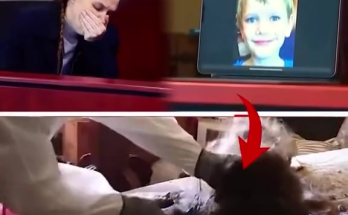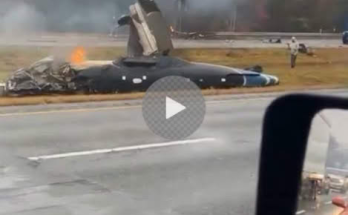A recent security incident during the transportation of a detainee has sparked renewed discussions about officer safety, professional preparedness, and the unpredictable nature of law enforcement duties. What began as a routine transfer in a controlled environment unexpectedly shifted into a high-stakes struggle that could have ended very differently.
This event, captured on facility surveillance cameras, illustrates how rapidly situations can escalate—even when the individuals involved appear to be under control. It also offers important lessons for law enforcement agencies, communities, and the general public about the realities of frontline security work.
The Event in Detail
The episode unfolded inside a secure transfer area commonly referred to as a sally port, where individuals in custody are moved from vehicles into detention facilities.
Officers were escorting a detainee who was being transported in a wheelchair. The environment seemed calm, and by all outward appearances the process was proceeding as expected. However, within moments, the atmosphere changed.
As one officer leaned closer to assist, the detainee made a sudden, forceful movement toward the officer’s side. According to video evidence, the individual reached in the direction of the officer’s secured equipment belt.
For several seconds, a tense struggle followed. The officer resisted the attempt, holding firm while trying to keep control. During the scuffle, another officer in the area quickly noticed what was happening. This second officer immediately intervened, tackling the detainee away from the equipment and helping stabilize the situation.
The confrontation ended without injuries. The individual was restrained more securely, and the equipment remained in the officer’s possession.
Why This Moment Matters
Although the situation concluded safely, the close call has been described by several observers as a wake-up call. Even though the detainee was in a wheelchair and appeared limited in movement, the attempt serves as a reminder that physical restraints or apparent vulnerabilities do not automatically eliminate risk.
For many people unfamiliar with law enforcement operations, the question arises: how could such a serious situation occur in a secure setting with multiple officers present? The answer lies in the unpredictable nature of human behavior.
Law enforcement officers are trained to expect the unexpected, yet real-world situations always present unique challenges. A single lapse in attention, or one underestimated movement, can create an opportunity for escalation.
Officer Preparedness and Physical Readiness
One of the most debated aspects of the video, once it was shared online, was the officer’s visible difficulty in initially handling the struggle. Some viewers questioned whether physical conditioning played a role in the officer’s ability to respond quickly.
While public commentary can often lean toward criticism, this particular conversation has emphasized professional standards rather than personal ridicule. Policing is a profession that requires both mental resilience and physical capability. The presence of essential equipment means officers must be able to protect themselves and prevent unauthorized access at all times.
Experts in officer training point out that physical readiness is not merely about appearance or athletic ability. It is about stamina, agility, reflexes, and the ability to sustain control in high-pressure moments. In this case, the officer’s partner stepped in rapidly, ensuring the confrontation did not progress further. That intervention may well have prevented a tragic outcome.

The Broader Lesson for Law Enforcement Agencies
Every event that threatens officer or public safety becomes a point of study for agencies across the country. Incidents like this highlight the continuing importance of:
- Situational awareness — Remaining alert even in seemingly routine tasks.
- Equipment security — Ensuring holstered or carried gear is properly secured against attempts at access.
- Team coordination — Having a partner or backup present, especially during transfers.
- Ongoing training — Practicing responses to unexpected behaviors through scenario-based exercises.
Agencies may also revisit policies regarding the number of officers required for certain types of detainee transfers. While resources are always a concern, the cost of understaffing in such situations can be far greater than the investment in additional personnel.
Community Perspective
From the public’s point of view, the incident has sparked broader conversations about both accountability and trust. Many viewers of the footage focused on the idea that law enforcement professionals carry a responsibility not just to enforce laws, but to maintain readiness in every dimension of their role.
Public confidence is shaped not only by official results—such as the fact that no one was harmed—but also by perceptions. When people see an officer momentarily struggling to maintain control, they naturally question whether adequate support, training, and fitness standards are being applied consistently across departments.
This does not mean community members are seeking to undermine or disrespect the profession. Rather, it demonstrates the importance of transparent standards and visible preparedness. Communities want to know that their officers are equipped, trained, and capable of responding effectively under pressure.
Training as Prevention
Experts in law enforcement emphasize that equipment retention is one of the most crucial, yet sometimes underappreciated, elements of officer training. Many agencies focus heavily on de-escalation, communication, and tactical responses to threats, but scenarios like this remind us that retaining one’s issued equipment is equally vital.
Training academies often include specific exercises where individuals attempt to remove training equipment from an officer under controlled circumstances. These exercises are designed to prepare officers for exactly the type of incident that occurred in this case. Regular practice ensures that officers not only know the correct techniques but can apply them instinctively under stress.
Scenario-based training also builds confidence and teaches officers to manage adrenaline and remain clear-headed when a sudden, surprising movement takes place.
Policy Considerations Moving Forward
Following this event, several policy-related questions naturally arise:
- Should additional officers be assigned for transports?
Particularly when individuals have a documented history of aggressive behavior, or when physical restraints may create unexpected challenges, extra personnel could reduce risks significantly. - How should facilities design transfer zones?
Physical layouts can either enhance or hinder officer control. Ensuring visibility, space management, and access control may reduce vulnerabilities. - What role should wellness programs play?
Beyond initial training, agencies may consider ongoing wellness and conditioning programs that help officers maintain strength and endurance throughout their careers. - How can public communication be improved?
Transparency in sharing outcomes and lessons learned from such incidents may increase public understanding and trust.
A Near Miss with Important Implications
What makes this event particularly noteworthy is that it ended without injury. In other circumstances, outcomes could have been far worse. The presence of a second officer, quick action, and secured procedures prevented a serious escalation.
Yet, the “what if” questions remain. What if the officer had been alone? What if the detainee had succeeded in accessing equipment? What if backup had been seconds slower to respond?
These unanswered possibilities are exactly why agencies conduct after-action reviews, studying each incident to identify strengths, weaknesses, and opportunities for improvement.
Closing Reflections
The recent detainee transport incident is not just a story about a brief struggle in a secure facility. It is a reminder of the unpredictable nature of public safety work. It is a lesson in vigilance, preparation, and teamwork.
For law enforcement professionals, it highlights the need to maintain situational awareness and physical readiness at all times. For agencies, it emphasizes the value of ongoing training, policy review, and transparent communication. And for the public, it illustrates that appearances can be misleading—a restrained or seemingly vulnerable individual can still present real challenges.
Ultimately, this near miss underscores the importance of constant preparation. While this incident concluded safely, it stands as both a cautionary tale and a call to action. Agencies, officers, and communities alike have an opportunity to learn from it—and to ensure that the next unexpected moment is met with even greater readiness.



